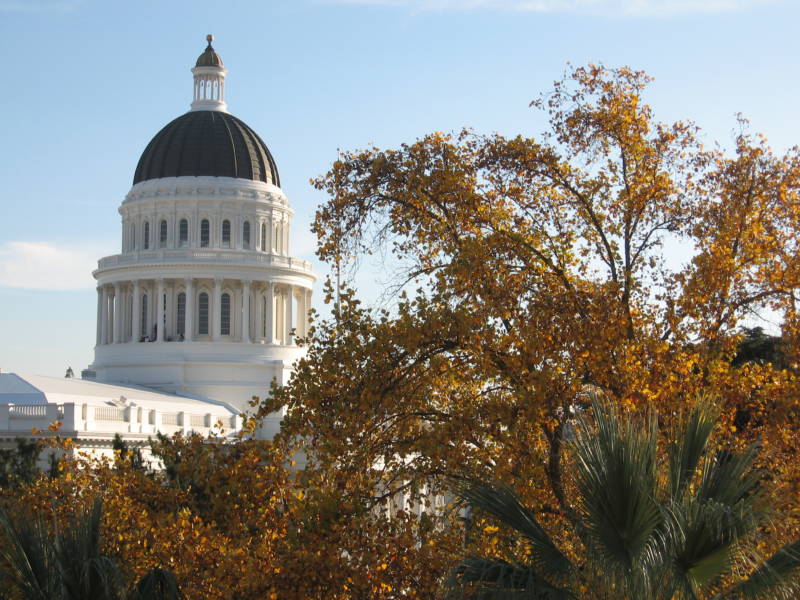The California Channel — California's version of C-SPAN — went off the air early Wednesday and will close its doors for good on Oct. 31.
With it goes one of the main ways Californians could follow what their legislators and government were up to on a daily basis.
"We managed to do, I think, a great service for the citizens of California in opening that window to democracy and letting them see the sausage being made, if you will," said California Channel President John Hancock. "It's not always pretty, but it is certainly instructive."
Started in 1989 as a nonprofit, the Cal Channel, as it's commonly known, aired live legislative floor sessions of the state Senate and Assembly, major committee hearings, state Supreme Court hearings and gubernatorial news conferences and debates. It also would occasionally show panels and educational programming on state issues. Cal Channel has been supported by the California Cable and Telecommunications Association since 1993.
 Available to any Californian with a cable TV subscription, the channel has been funded through cable fees and costs about $1.2 million annually to run. That comes out to about $0.02 per cable subscriber statewide, Hancock said.
Available to any Californian with a cable TV subscription, the channel has been funded through cable fees and costs about $1.2 million annually to run. That comes out to about $0.02 per cable subscriber statewide, Hancock said.
The channel's board — made up of cable and telecomm executives — voted earlier this year to end operations. The board argues that the need for the Cal Channel has become obsolete, largely because of the internet.
In 2016, California voters passed Proposition 54, which requires the recording of public meetings of the state Legislature. The recordings must be posted online within 24 hours of a meeting and be available for 72 hours before a bill can be passed.
"The passage of that initiative, in my board's view, basically eliminated the need for the California Channel because our efforts were duplicative," Hancock said.
The cable association also cited concern that not all Californians had access to the Cal Channel — since it was only available via a cable subscription — and a growing number of TV viewers are "cutting the cord" and relying solely on streaming services. The Cal Channel also has its own YouTube channel.
It's hard to say exactly how many people watched the Cal Channel since they didn't do viewer surveys, Hancock said.

